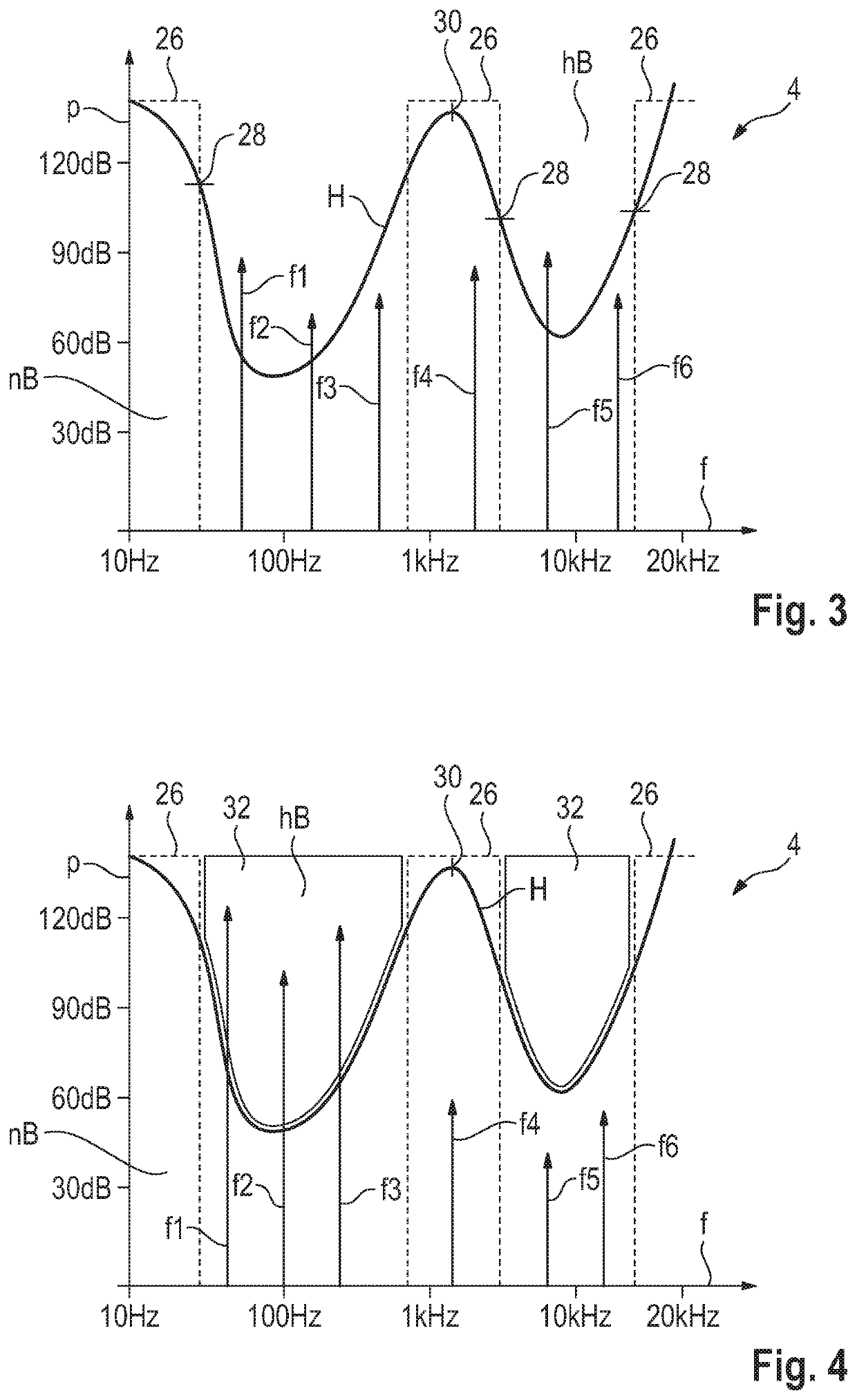Method for operating a hearing device, and hearing device
a hearing device and hearing technology, applied in the direction of instruments, occlusion effect electronic compensation, deaf aid adaptation, etc., can solve the problem of multiple noise signals, and achieve the effect of adequate noise suppression, poor hearing, and advantageously active suppression
- Summary
- Abstract
- Description
- Claims
- Application Information
AI Technical Summary
Benefits of technology
Problems solved by technology
Method used
Image
Examples
Embodiment Construction
[0045]Referring now to the figures of the drawings in detail and first, particularly to FIG. 1 thereof, there is shown an exemplary embodiment of a hearing device 2. In FIGS. 2 to 4, an example of an audiogram 4 of a user is shown, on the basis of which an active noise cancellation 6 of the hearing device 2 is selectively operated in different ways as part of a method for operating the hearing device 2. The active noise cancellation 6 is generally used to suppress noise, where the term “noise” is also intended to mean individual sounds, without limitation of generality. The noise cancellation 6 suppresses noise in such a way that a quieter listening situation is created for the user. This is carried out by generating counter-noise in order to partially or even completely eliminate the noise signals. This requires energy, which in this case is extracted from an energy storage device 8 of the hearing device 2.
[0046]The hearing device 2 in FIG. 1 has a control unit 10, which is configu...
PUM
 Login to View More
Login to View More Abstract
Description
Claims
Application Information
 Login to View More
Login to View More - R&D
- Intellectual Property
- Life Sciences
- Materials
- Tech Scout
- Unparalleled Data Quality
- Higher Quality Content
- 60% Fewer Hallucinations
Browse by: Latest US Patents, China's latest patents, Technical Efficacy Thesaurus, Application Domain, Technology Topic, Popular Technical Reports.
© 2025 PatSnap. All rights reserved.Legal|Privacy policy|Modern Slavery Act Transparency Statement|Sitemap|About US| Contact US: help@patsnap.com


